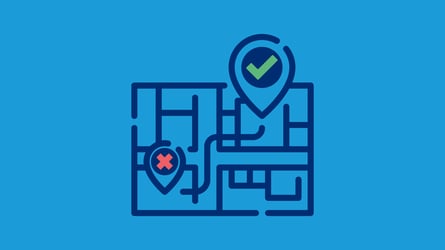When Apple added podcasts to its iOS in 2005, the format earned a passionate, but small, fan base. Public radio staples such as Fresh Air and This American Life were early adopters of the digital podcast format, but it wasn’t until Serial came along in late 2014 that podcasting experienced its first breakthrough hit. In the podcasting boom that has followed, it’s interesting to note that so much of the conversation about the audio medium is taking place online.
Experiencing Longform Audio on Social Media
The recent hit podcast In the Dark debuted in early September 2016. Due to the familiarity of the high-profile case in the midwest, it initially received positive local reception. One review of the podcast in particular, by Vox, pushed the podcast national and then global. With a reach of 24.6 million people, 142 Twitter shares, and 1,700 Facebook shares, Talkwalker’s Virality Map feature allows us to see a visual representation of information spreading.
From the time Vox reviewed In the Dark until the end of 2016, the podcast had been mentioned more than 10,000 times on social media, and topped lists like The Guardian’s “Best 50 podcasts of 2016,” an article which reached 106.3 million people.
A similar phenomenon happened with the podcast Missing Richard Simmons. Released independently and without a major public radio organization backing it, the podcast went from relative anonymity to headlines news. Mentions of Richard Simmons, a fairly low-profile celebrity, went from around 4,000 in the month leading up to the podcast release to 65,800 in the month and a half after it was announced. An NPR piece by Linda Holmes entitled “Richard Simmons and the Nature of Being Known” whizzed around the internet, being picked up by other news sources, blogs, Facebook, and Twitter, and bouncing around for weeks before eventually reaching over 40 million people.
S-Town, a podcast by the creators of Serial and This American Life, was a massive hit before it even debuted. The podcast immediately set records, achieving 16 million downloads in the first week of its release. As visualized by Talkwalker's World Maps feature, Woodstock, Alabama (aka, “Shit-town,” as nicknamed by the podcast’s protagonist John B. McLemore) has gone global.
S-Town sparked a ton of supplementary conversation on social media, notably around depression and mental illness, suicide, and rural America. Reactions on social media were strong.
What do viral podcasts mean for social media marketers?
1. Social media can add to your story
Aside from engaging with your audience, social media serves as a supplement to podcasts. Engaged listeners can turn to social media to find photos or maps that add a visual element to their audio experience. S-Town enriched their story with photos on their website and social media channels.
Serial learned the hard way that social media inspires citizen-journalists. Keeping the privacy of interview subjects while an investigation is ongoing will continue to be a challenge.
2. You never know who is listening
Talkwalker’s World Maps feature demonstrates that online conversation around a podcast can happen anywhere. Keep in mind that the listeners of your podcast may not be who you originally intended.
3. Enlist your allies to spread the word
Yes, influencer marketing can be applied to podcasts as well! For Missing Richard Simmons, an NPR writer turned out to have huge influence. The tweet with the highest engagement rate around S-Town came from Neil Patrick Harris, whose recommendation reached 26.4 million people.
Identifying your influencers and incentivizing (or thanking them!) can push a podcast from relative anonymity to watercooler conversation.



